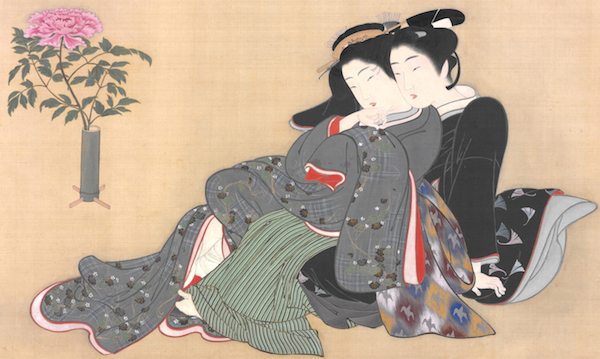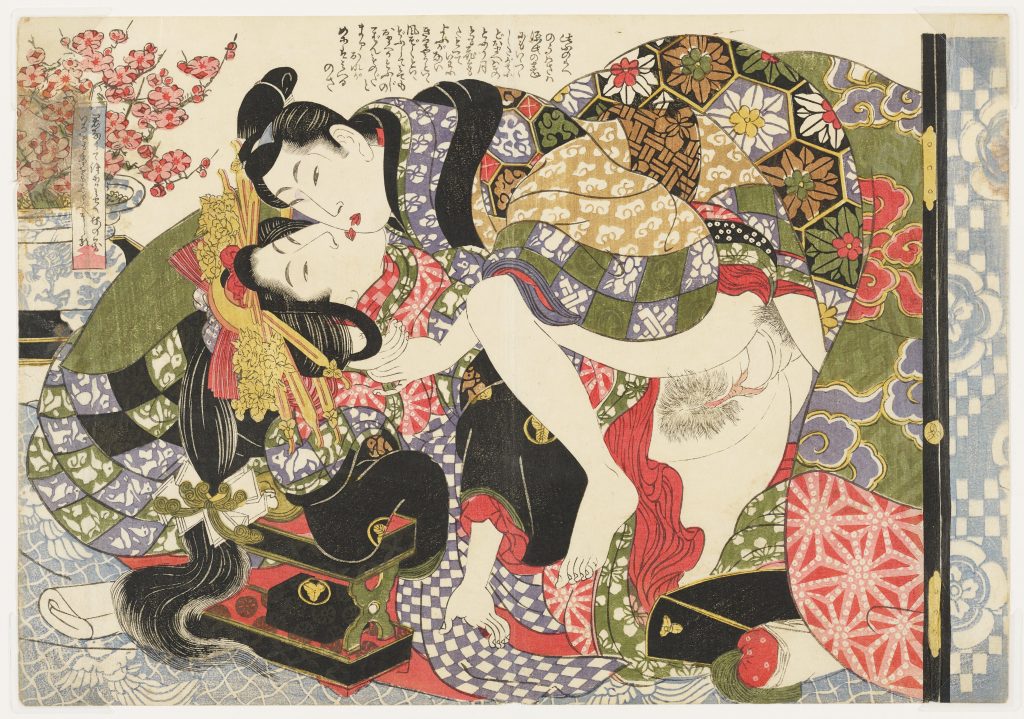
Life of prostitution could start as young as the age of 7. Many families living in impoverished villages or farms would sell their kids to brothels in Yoshiwara. Once introduced to their new “sisters”, the young ones would be used for manual labor. They cleaned, cooked, delivered messages and tended to courtesans. All during that time, they would get insights on the life ahead of them and learn new tricks such as how to speak with a manipulative tongue.
By the ages of 11-12, the children were tested to be seen if they were talented enough to be trained by an elite courtesan. Practice was laborious. They had to learn calligraphy, the tea ceremony, how to dance, sing and play the samisen. This training period was crucial in a prostitutes life. The quality of their craft would determine the quality of their life later along the line.

Only the most gifted and talented would be able to become a tayù. These women would live in luxurious brothels, and clients would go through an interview followed by 3 meetings with the tayù until he could have sex with her (fig.2). Below the tayù, was the kōshi. These prostitutes lived in less nicer brothels, but there kimonos were expensive and they held themselves in an aristocratic manner. These women were able to turn down men which was a luxury many couldn’t afford, namely the sanchas. Under them were the tsubone whose living conditions were much more grim. They would play the samisen for clients through lattices and cages (fig.3). Lastly were the hashi. Hashi lived on the outskirts of Yoshiwara. Living conditions were terrible and the pay much worse.

Such hierarchy made for extreme competitiveness between sisters creating tension and cruelty amongst them, not to mention the treatment some received by clients. Although some lived in better conditions, almost all lived in dept. From the clothes to the food, “debt to the brothel would only increase as she rose through the ranks, as her luxurious and ever-changing wardrobe, which required as many as four or five layers of kimonos worn at a time, and the tips and fees for her attendants were her financial burden, too.” (Sex and Suffering, 2015).
Once these women would reach the age of 20, most of them would already be dead or die in the years to come. Due to toxic lead heavy makeup to whiten skin, venereal diseases or the berthing of a child, most women would die incredibly young. This death toll only generated the demand for more prostitutes and uplifted the market.
Although all the information we have on prostitutes of Yoshiwara comes from men’s perspective, one can only imagine how hard their life was. Even surrounded by luxury, they had no freedom and no say. Hard work, and little pay off.
Work Cited
Hix, Lisa. “Sex and Suffering: The Tragic Life of the Courtesan in Japan’s Floating World.” Collectors Weekly, 2015, www.collectorsweekly.com/articles/the-tragic-life-of-the-courtesan-in-japans-floating-world/.
Seigle, Cecilia Segawa. “Geisha.” The International Encyclopedia of Human Sexuality, edited by Patricia Whelehan, and Anne Bolin, Wiley, 1st edition, 2015. Credo Reference, https://ezproxy.capilanou.ca/login?url=https://search.credoreference.com/content/entry/wileyhs/geisha/0?institutionId=6884. Accessed 12 Oct. 2019.
“ukiyo-e (Japanese ‘pictures of the floating world’).” The Thames & Hudson Dictionary of Art Terms, Edward Lucie-Smith, Thames & Hudson, 2nd edition, 2003. Credo Reference, https://ezproxy.capilanou.ca/login?url=https://search.credoreference.com/content/entry/that/ukiyo_e_japanese_pictures_of_the_floating_world/0?institutionId=6884. Accessed 12 Oct. 2019.
Images:
Figure 1. Hix, Lisa. “Sex and Suffering: The Tragic Life of the Courtesan in Japan’s Floating World.” Collectors Weekly, 2015, www.collectorsweekly.com/articles/the-tragic-life-of-the-courtesan-in-japans-floating-world/.
Figure 2. Eizanexpand_more, Kikugawa. “Yoshiwara Prostitute , from Selections from the Brocade Quarter (E-Awase Kingaishō), Kikugawa Eizan ^ Minneapolis Institute of Art.” Mia, collections.artsmia.org/art/119640/yoshiwara-prostitute-from-selections-from-the-brocade-quarter-kikugawa-eizan.
Figure 3.Parker, Clark. “A Walk in the Sex Park: Yoshiwara and the Tokyo Bordello.” The Tokyo Files 東京ファイル, 14 Jan. 2019, thetokyofiles.com/2013/12/09/a-walk-in-the-sex-park/#jp-carousel-5216.
